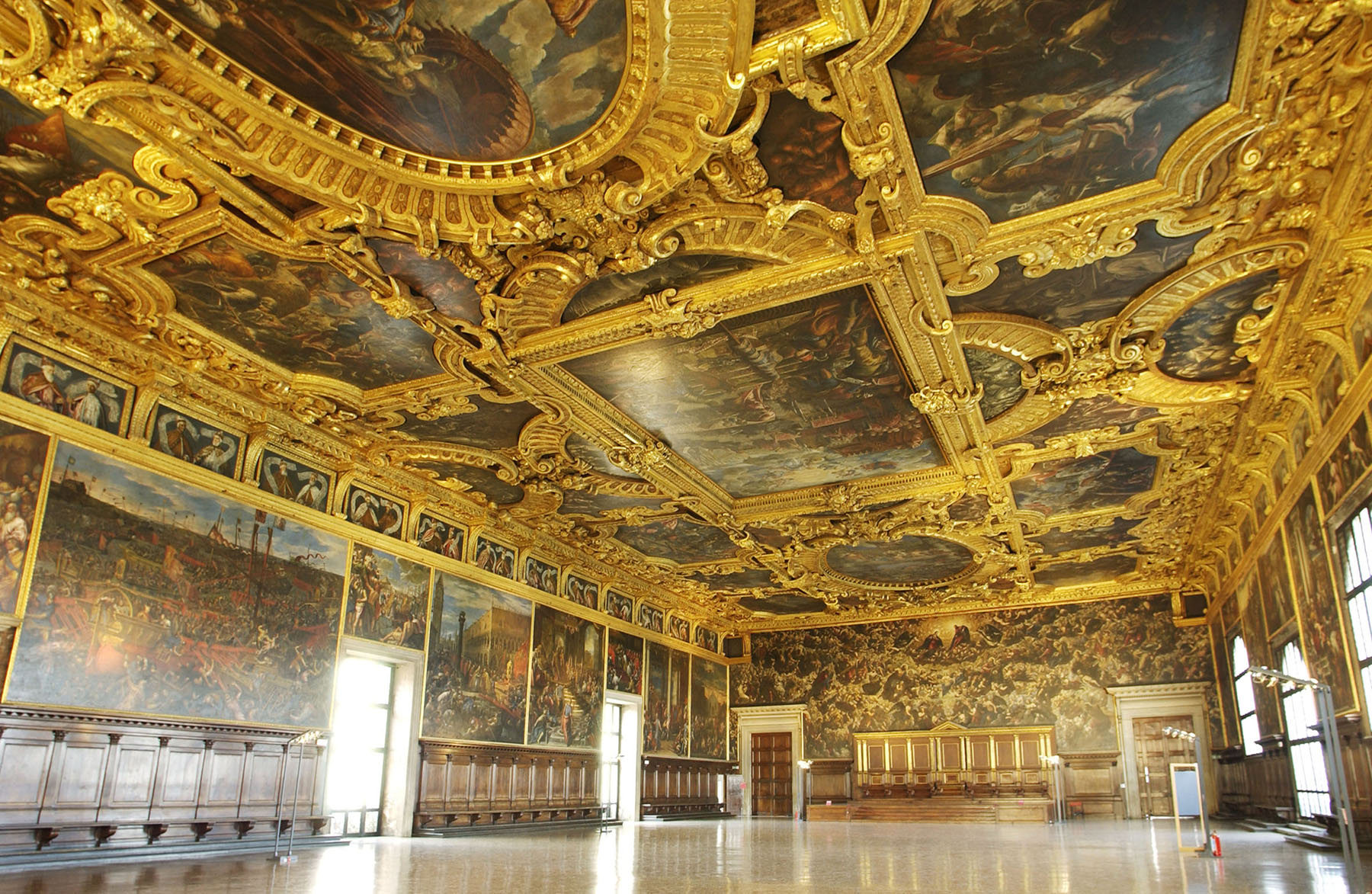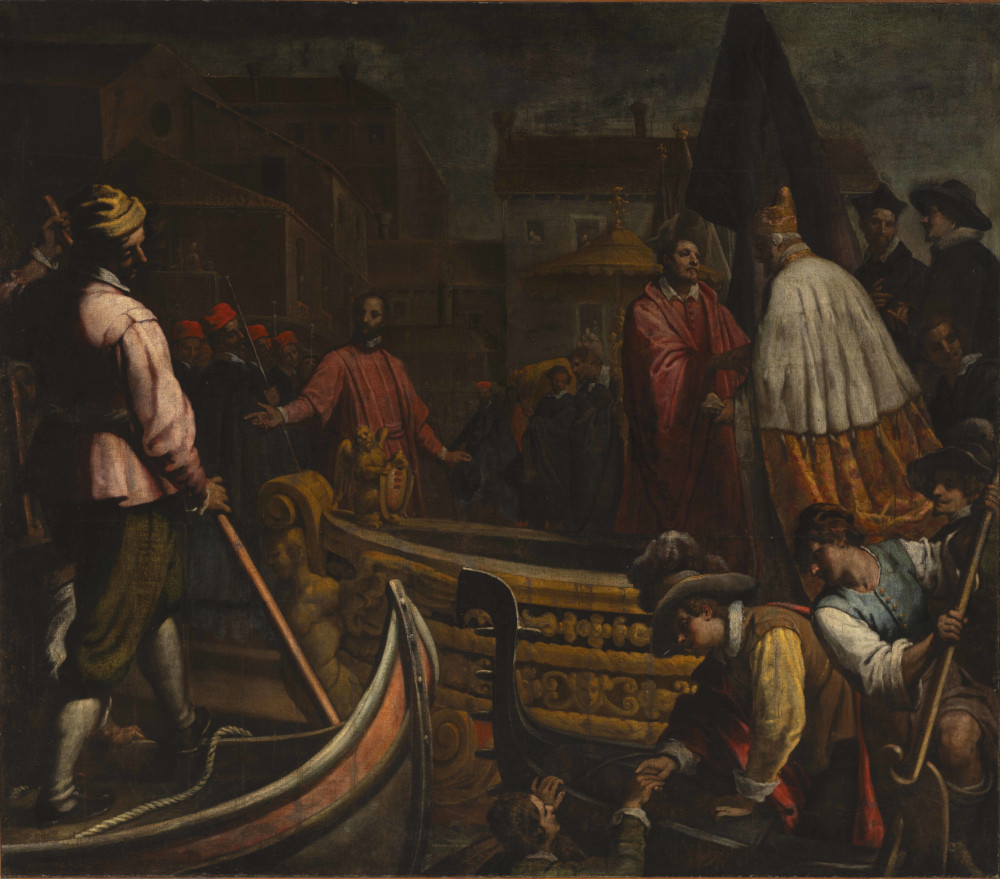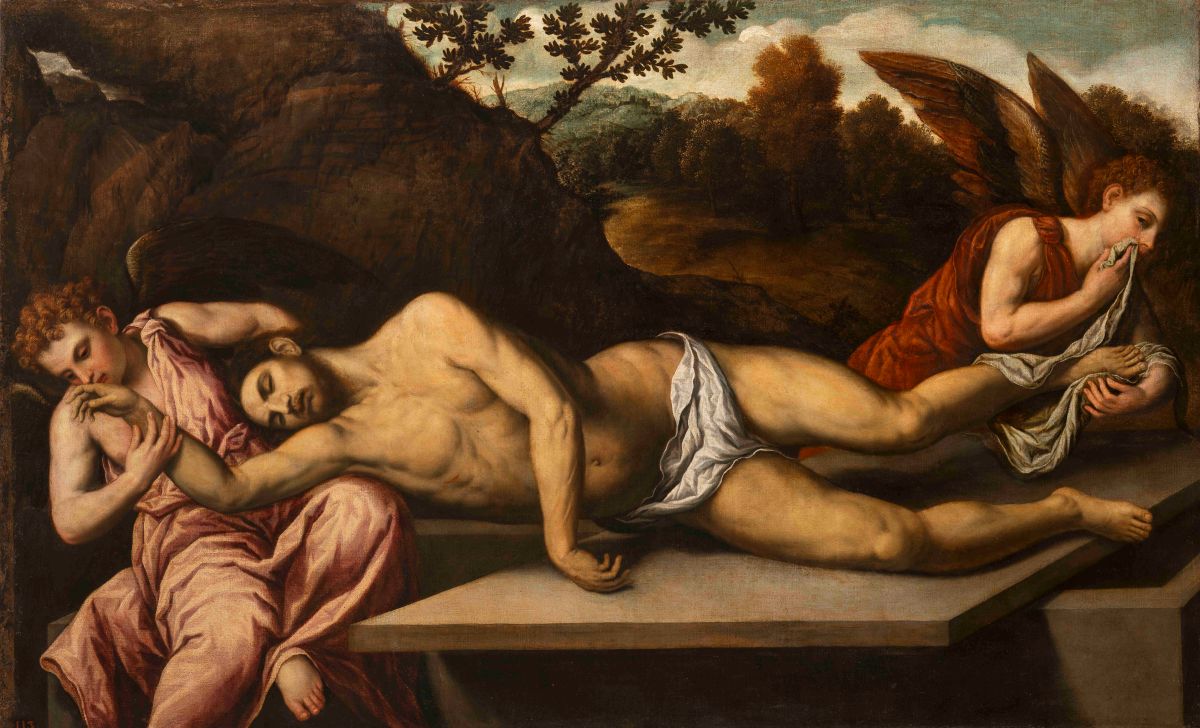
Atrio delle Prigioni
Matteo Ponzone (1583-post 1663)
La visita del doge Giovanni Corner alla chiesa di San Vio (post 1641)
Olio su tela
L’opera, in origine posta a decoro della sontuosa Sala dei Banchetti, raffigura la visita del doge Giovanni Corner alla chiesa dei Santi Vito e Modesto, cerimonia a ricordo della sventata congiura di Bajamonte Tiepolo del 1310, a cui seguì l’istituzione del Consiglio dei Dieci. Tale festività fu iterata ogni 15 giugno fino alla caduta della Serenissima Repubblica.
Nell’occasione, il doge, seguito dalla Signoria e dagli ambasciatori, si dirigeva verso la chiesa a bordo dei peatoni dogali, mentre chi seguiva la processione utilizzava un ponte di legno, appositamente predisposto, che attraversava il canale. Il giorno di San Vito (Vio in veneziano) terminava quindi con un convito allestito nella Sala dei Banchetti, fattore che motiva la collocazione originaria di questo dipinto.

Paris Bordon
Cristo morto sorretto da angeli (sesto/settimo decennio del XVI secolo)
Olio su tela
Questo dipinto faceva parte della collezione di un fabbricante di saponi e venne donato alla Repubblica tramite il suo testamento. Egli desiderò che venisse collocato negli ambienti del Consiglio dei Dieci, dove trovavano posto le opere più illustri acquisite dalla Repubblica. Paris Bordon, artista trevigiano, fu allievo del grande Tiziano nel periodo in cui Giorgione era ancora in vita e realizzò quest’opera durante il periodo maturo della sua carriera. La freschezza inventiva nella posa del Cristo, abbandonato su un sepolcro che ricorda la croce, si vede nella ripresa della stessa da parte degli artisti successivi.
Restaurato con il sostegno di Save Venice con il contributo di Kathryn Ploss
